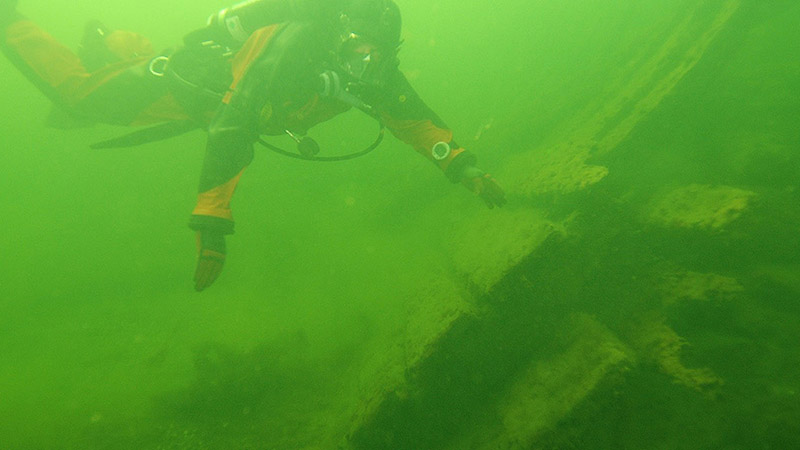Just north of Borgholm in Kalmarsund lies the rock formation Elefanten (the Elephant). An unusual name for sunken rocks – many sailors have probably wondered what elephants were doing in Sweden’s latitudes. But the name comes from the warship Elefanten, which grounded here in 1564.
The ship was launched in Stockholm around 1560, and at a length of roughly 50 metres it was the kingdom’s largest warship.
In August 1564, Elefanten fought its last battle off the northern tip of Öland. The ship sailed towards Kalmar after the battle but ran aground after getting too close to Öland’s shore. A large hole was torn through the bottom of the ship. The crew managed to stop the worst leakage using a makeshift seal, and the ship was able to continue.
At the Björkenäs shipyard just north of Kalmar, the damage was to be repaired. But the carpenters made a fatal mistake, removing the makeshift repair too soon. Elefanten quickly filled with water and sank near the shore.
The ship lay at a depth of just six metres, and King Erik XIV considered a salvage operation possible. Large stone foundations were built around the hull to serve as support when the ship was to be lifted from the bottom.
But all the salvage attempts failed, and the king realised he had lost his dear Elephant. He then ordered huge amounts of rock to be tipped over the wreck. Since he himself had failed, he was anxious that no one else would get the chance to right the ship.
To this day, the remains of these stone foundations are visible close to the hull although they have partly collapsed. Despite more than 450 years at the seafloor, Elefanten still impresses.




